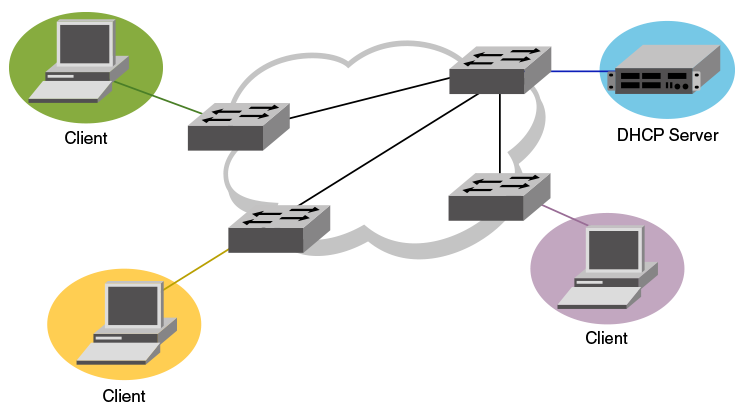Inter-VRF route leaking and DHCP relay
The illustration below shows four VRFs, with three of them connecting to the fourth for DHCP services. (For more information on working with DHCP IP Relay, refer to the "DHCPv4" chapter.)
Inter-VRF route leaking example for connecting clients to a DHCP server in a different VRF.

The following example shows setting up Inter-VRF route leaking and DHCP between the red VRF and the blue VRF.

Note
Inter-VRF route leaking supports both IPv4 and IPv6. Use the ip address and ip route commands for IPv4 and the ipv6 address and ipv6 route commands for IPv6. These commands support IP addresses, Ethernet interfaces, and virtual Ethernet (VE) interfaces for the leak destination. Refer to the Extreme SLX-OS Command Reference.
